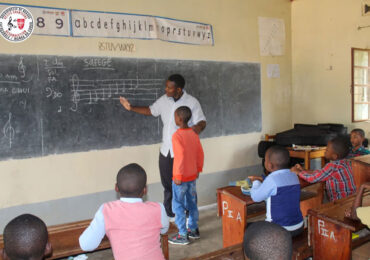Have you ever entered a Catholic church and, upon discovering an extinguished vigil lamp, immediately felt immersed in emptiness? The usually beckoning flame was not there to reassure and promote your awareness of the presence of the Divine.
This is what vigil lamps do.
People can be vigil lamps. Think of those individuals who have a certain light in their eyes, a constant brightness that hints at their sense of some greater benevolent Power in their midst. Just as that little lit red lamp near a tabernacle invites us into a deeper dimension of reality, so do these blessed souls so alive with their luminous countenances.
Places can also be vigil lamps, centers of vibrancy that pulsate with an awareness of and passion for a deeper understanding of truth. Rather than mere schools for skills-training, they are in our increasingly utilitarian world oases of learning where our spirits and intellects are nourished by and raised to higher levels of understanding and purpose. Their very vibrancy attracts and illumines inquiring minds. Isn’t this the genesis of the great European universities – the pursuit and application of truth?
In that vast land mass of what was the Union of Soviet Socialist Republics (USSR), in that enormous eight million square mile expanse between the Polish border and Japan, there is at least one – that’s right, at least one – vigil lamp whose steady glow – kept hidden for forty years in underground ‘catacombs’ – now shines with a renewed confidence rekindled by St. John Paul II himself at the dawn of this millennium.
The Ukrainian Catholic Church is one of the several Eastern Rite Catholic Churches in full communion with the Holy See. Suppressed by Soviet authorities for much of the last century it has surfaced with the recently reclaimed independence of that country. Readers interested in modern examples of ‘blood of the martyrs being the seed of the Church’ would do well to acquaint themselves with the history of this persecuted ecclesial community over the past sixty years. It is an account that provides a compelling perspective to our American concept of ‘religious freedom’.
The vigil lamp the Ukrainian Catholic Church has re-ignited for Ukraine and its neighboring nations (and for the world) glows most brightly in the Ukrainian Catholic University in Lviv in the western part of that country. We, both as Catholics in the United States and as citizens of a democracy which cherishes freedom, can only be inspired by the chutzpah of this “open academic community living the Eastern Christian tradition and forming leaders to serve with professional excellence in Ukraine and internationally – for the glory of God, the common good, and the dignity of the human person”. Visit their website and see that beyond providing its students with a modern curriculum the University encourages them to be active promoters of human rights – a fact well evidenced by the University’s involvement in the recent attempts of that nation to free itself from the dehumanization of Russian hegemony.
Some assert that the Church in the northern hemisphere is moribund, that she is either dying or on life-support. They find hope in the youthful vigor, authentic as it is, of the Church in the southern realms, in South America and Sub-Sahara Africa where, historically speaking, Christianity is a recent arrival. But, let them not discount the resilience of the faith in lands where the Gospel was introduced a millennium ago. Let them not dismiss the role the Ukrainian Catholic Church and its Catholic University will play in the continued advancement of the Kingdom. Some vigil lamps, especially ones from the East like the Star of Bethlehem, are inextinguishable.

